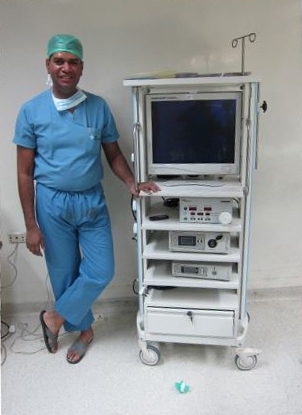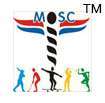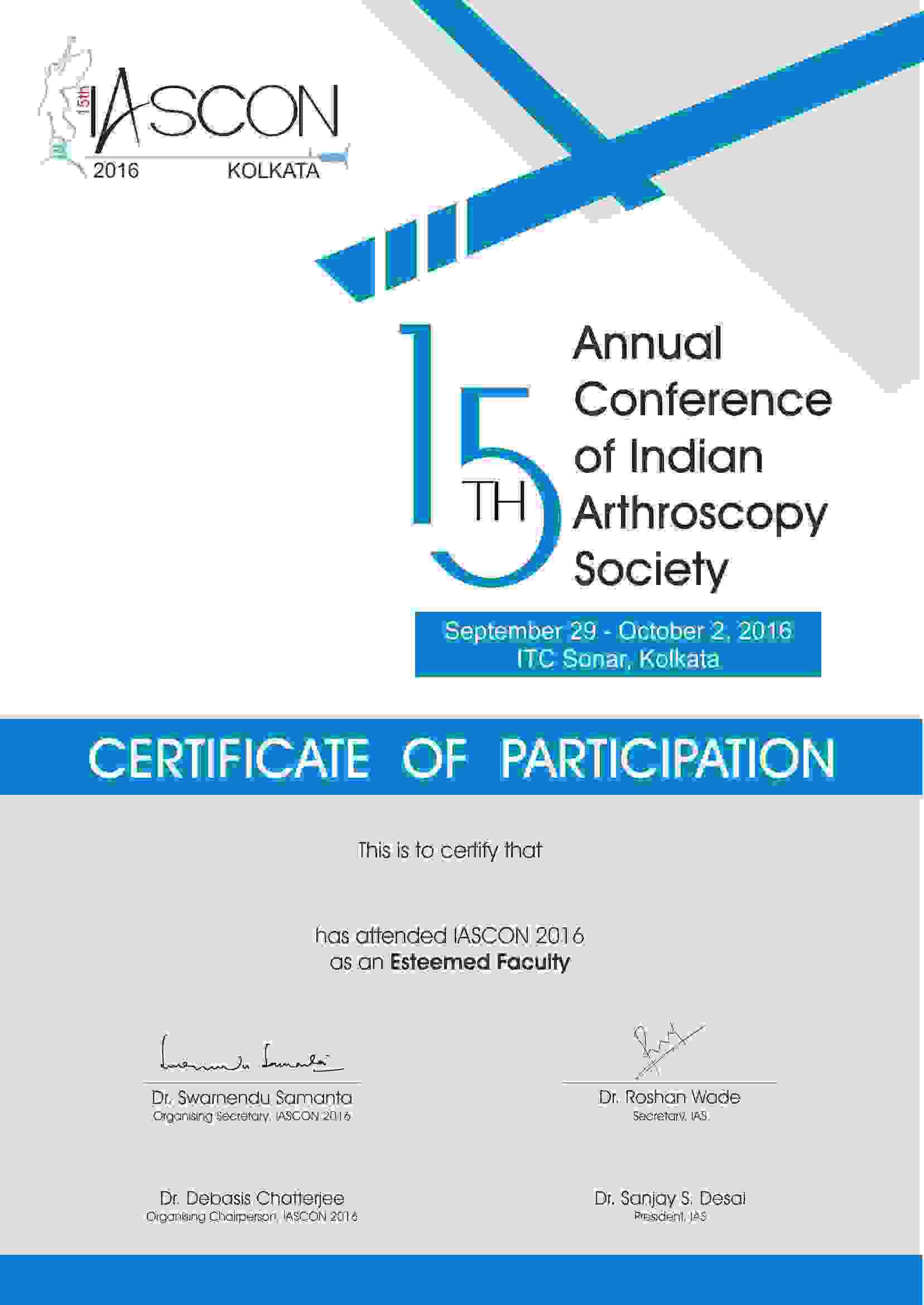What is arthroscopy?
Arthroscopy is a surgical procedure in which the interior of a joint is inspected with a tiny 4 mm lens called the arthroscope. One or more additional 4 mm incisions are required to diagnose & treat the diseased joint. Throughout the procedure a sterile saline infusion is used to distend the joint to allow a little more room to perform the procedure.

General Information On Arthroscopy
Why arthroscopy?
There are multiple benefits for both the surgeon & the patient. The patient bene?ts include:
- Less pain
- Fast recovery (one can join back work within a week in most instances)
- Negligible blood loss
- Cosmetic (in most instances stitch-less)
- Less chances of infection
- Usually done as a day care procedure (cost effective)
What are the modern methods of pain relief?
Arthroscopy is generally not associated with severe pain. The pain is well controlled with a pain pump, that injects a pain killer medicine directly into the joint, thereby enabling painless & almost immediate movements of the joint.
What are the possible complications?
Complications are rare after an arthroscopy.Usual complications are the same as that found after any orthopedic surgery like infection, hematoma (blood collection in the surgical site) etc. For procedure specific complications it is best to discuss them individually with your surgeon.
All joints can be scoped
Arthroscopy is most popular for the knee & the shoulder. ankle & elbow can also be seen with the same scope. wrist joint requires a smaller scope & hip joint requires a longer & special angled scope.
Better view for the surgeon
The arthroscope gives an unparalleled 360 degrees enlarged view of the joint, allowing us to perform our procedures with maximum precision. each year more & more procedures, including fracture fixations are being added to our armamentarium, thereby allowing us to pass the minimally invasive benefits to a wider spectrum of patients
Less interference with your routine
- day care procedure (no admission unless dictated by your insurance).
- spinal (knee, ankle & hip)/ general anesthesia (shoulder/elbow & wrist).
- immediate bathing & walking.
- minimum post-op visits (usually 1-2).
- minimum duration of medications (3-5 days).
- resume work within a week (surgery specific).










